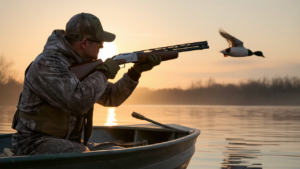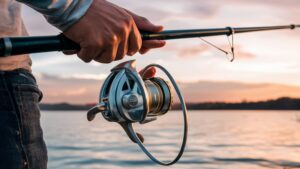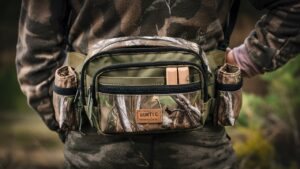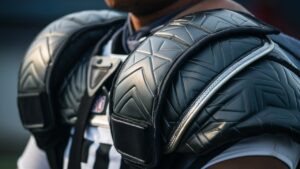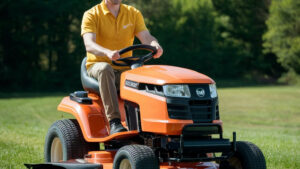Setting up a lure for surf fishing can seem tricky at first. But with the right steps, it’s quite easy.
Recommended Best Surf Fishing Lures 2025
| Recommendation | Product |
| Best Overall | OCEAN Fly Fish Saltwater Trolling Fishing Lures |
| Popular Choice | Dr.Fish Saltwater Fishing Lures |
| Best Value | CHSMONB Fishing Lures |
| Best Budget | Rapala X-Rap Saltwater Fishing Lure |
| Another Excellent Pick | LUCKY CRAFT Flashminnow 110 |
Surf fishing is a favorite pastime for many. The thrill of catching fish from the shore is unmatched. But, the key is in the lure setup. A well-set lure attracts more fish, making your fishing trip successful. This guide will walk you through each step.
From choosing the right lure to attaching it properly, you’ll learn all you need to know. Get ready to enhance your fishing skills and enjoy the rewards of surf fishing.
Choosing The Right Gear
Setting up a lure for surf fishing can be an exciting adventure, but having the right gear is crucial. The right equipment can make the difference between a successful day on the water and a frustrating experience. Let’s dive into the essentials you’ll need, starting with choosing the right gear.
Fishing Rods
Choosing the perfect fishing rod is the first step. A longer rod, usually between 9 to 12 feet, is ideal for surf fishing. This length helps you cast further into the surf, reaching those elusive fish.
Opt for a medium to heavy action rod. This gives you the strength to handle larger fish and the flexibility to feel even the slightest nibble. Look for a rod with a comfortable grip—one that feels good in your hands for those long hours on the beach.
Consider the material of the rod. Graphite rods are lightweight and sensitive, while fiberglass rods are more durable. If you’re starting out, a composite rod that combines both materials can offer the best of both worlds.
Reels
The reel you pair with your rod is just as important. For surf fishing, a spinning reel is often the best choice. It’s easy to use and can handle the saltwater environment.
Choose a reel with a high line capacity. This ensures you have enough line to reach distant fish and to handle their powerful runs. A reel with a good drag system is also crucial, as it helps you manage the fight with larger fish.
Don’t forget to rinse your reel with fresh water after each use. Saltwater can be harsh on equipment, so regular maintenance will prolong the life of your gear.
Lines
Your fishing line is the final piece of the puzzle. Monofilament line is a popular choice for surf fishing. It’s affordable, stretches to absorb shock, and is relatively easy to handle.
Braided line is another excellent option. It’s stronger than monofilament and has less stretch, giving you better sensitivity. However, it can be more visible in the water, so you might need to add a fluorocarbon leader.
The pound test of your line should match the fish you’re targeting. For general surf fishing, a 15 to 20-pound test line is a good starting point. Adjust based on the size of the fish in your area.
Choosing the right gear is a critical step in surf fishing. The right rod, reel, and line can significantly enhance your experience. What gear do you find indispensable for surf fishing? Share your tips in the comments below!
Selecting The Ideal Lure
Choosing the right lure ensures a successful surf fishing trip. Consider water conditions and fish species for optimal results. Experiment with different lures to find the perfect match.
Setting up the perfect lure for surf fishing can make the difference between a successful day at the beach and going home empty-handed. Selecting the ideal lure is crucial. It can be intimidating with so many options available, but don’t worry. We’re here to break it down for you.
Types Of Lures
When it comes to surf fishing, there are several types of lures to consider. Each type has its own advantages and specific uses.
Metal Spoons: These are great for casting long distances. They mimic the shimmer of a baitfish and are excellent for catching fast-moving predators like bluefish and mackerel.
Soft Plastics: These lures are versatile and can mimic a variety of prey. They’re perfect for targeting species like flounder or snook.
Topwater Lures: These are designed to float on the water’s surface. They’re great for attracting fish that strike from below, such as striped bass.
Jigs: These lures can be used in various conditions and are highly effective. They work well for a wide range of fish, including redfish and sea trout.
The type of lure you choose should match the conditions you’ll be fishing in and the species you’re targeting.
Matching Lure To Target Fish
Choosing the right lure isn’t just about what looks good. It’s about what your target fish will find irresistible.
Know Your Fish: Different fish have different behaviors and preferences. Bluefish, for example, are aggressive and go for fast-moving lures. On the other hand, flounder prefer something that mimics a small, slow-moving prey.
Consider the Water: Clear water conditions require more natural-looking lures. Bright, flashy lures work better in murky waters.
Check the Local Bait: Local baitfish can influence what lures will be most effective. If mullet are plentiful, using a lure that mimics mullet can be highly successful.
Personal Experience: Once, while fishing for striped bass, I switched to a topwater lure after seeing fish jump. Within minutes, I had a bite. Observing and adapting to the situation can significantly increase your chances of success.
Choosing the ideal lure for surf fishing isn’t just science—it’s also an art. Pay attention to your surroundings, your target fish, and be ready to switch things up.
So, what’s your favorite lure for surf fishing? Have you ever had a surprising catch with an unexpected lure? Share your experiences and tips in the comments below!
Preparing Your Lure
Preparing your lure is a crucial step for successful surf fishing. It can make the difference between a great day and a disappointing one. This guide will help you get your lure ready for the perfect catch.
Attaching The Lure
First, thread the fishing line through the eye of the lure. Ensure the line is secure. Hold the lure and the line in one hand. With the other hand, wrap the line around itself five times. This creates a strong base for your knot.
Next, pass the end of the line back through the loop near the eye of the lure. Pull the line tight. This forms a knot known as the Clinch Knot. It is strong and reliable.
Checking The Knots
Always double-check your knots. A loose knot can cause you to lose fish. Gently tug on the line to ensure the knot is secure. If it slips, retie it. Wet the knot before pulling it tight. This helps the knot hold better and reduces friction.
Inspect the knot for any frays or weaknesses. A clean, tight knot is key. Remember, a strong knot means a strong connection to your catch.

Finding The Perfect Spot
Finding the perfect spot for surf fishing can make or break your trip. Understanding where to cast your lure increases your chances of catching fish. Here’s how to find the best locations on the beach.
Reading The Beach
Start by observing the beach layout. Look for areas where waves break differently. These spots often indicate changes in the underwater terrain. Notice where waves seem to flatten out before reaching the shore. This can suggest deeper water, creating a good fishing hole.
Pay attention to the presence of natural structures. Rocks, jetties, and sandbars can create ideal fishing environments. Fish like to gather near these structures for food and protection. Identifying these areas can help you find fish-rich spots.
Identifying Fish Hotspots
Look for signs of fish activity. Birds diving into the water can indicate a school of fish. This is a strong signal that fish are present. Also, watch for fish jumping out of the water. This behavior often suggests that predatory fish are chasing smaller fish.
Check the tide charts. Fish activity often increases during incoming and outgoing tides. Timing your fishing with these tides can improve your success. Knowledge of tidal patterns can help you choose the best times to fish.
Casting Techniques
Casting techniques are essential for a successful surf fishing experience. Mastering these techniques helps you place your lure in the best spot. Let’s explore the basics and some advanced casts that will improve your surf fishing skills.
Basic Cast
Start with a comfortable stance. Keep your feet shoulder-width apart. Hold the rod with both hands. Place your dominant hand near the reel and the other at the bottom. Face your target. Swing the rod back gently. Use a smooth motion to cast the lure. Release the line with a flick of your wrist. Practice this to achieve accuracy and distance.
Advanced Cast
For more distance, use the pendulum cast. Begin with the lure hanging a few feet from the tip. Swing the lure backward like a pendulum. As it swings forward, follow through with the rod. This motion adds extra power to your cast. Another technique is the off-the-ground cast. Lay the lure on the ground behind you. With a swift motion, lift the rod and cast. This method increases your casting distance significantly.
Retrieving Methods
Retrieving methods are crucial for surf fishing success. The right technique can make a big difference. Let’s explore two popular retrieval methods: slow retrieval and fast retrieval.
Slow Retrieval
Slow retrieval involves reeling in the lure at a leisurely pace. This method is great for attracting fish that prefer less movement. Slowly drag the lure through the water. This creates a lifelike appearance. Fish may think it’s an easy meal. This technique works well with soft plastic lures and live bait. Patience is key. Give fish time to notice and strike.
Fast Retrieval
Fast retrieval is more energetic. Quickly reel in the lure to mimic fleeing prey. This method attracts aggressive fish. They react to the rapid movement. Use fast retrieval with lures that create noise or vibrations. This method is ideal for targeting predatory fish. It’s exciting and dynamic. Keep the lure moving constantly. This keeps the fish interested.
Monitoring The Tide
Learn how to set up a lure for surf fishing. This easy guide covers everything you need to get started. Catch more fish by monitoring the tide.
Surf fishing can be an exhilarating experience, but it requires careful preparation. One key aspect is monitoring the tide. Understanding how tides impact fish behavior can significantly improve your chances of a successful catch. In this guide, we’ll dive into the essentials of tide monitoring.
Understanding Tide Patterns
Tides are essentially the rise and fall of sea levels caused by the gravitational pull of the moon and the sun. They play a crucial role in surf fishing. When the tide comes in, it brings baitfish closer to the shore, attracting larger fish.
Knowing the difference between high tide and low tide is vital. High tide means more water, so fish have more areas to explore. During low tide, fish are concentrated in smaller areas, making them easier to target.
Check local tide charts or apps to understand the tide patterns in your fishing area. These tools provide information on tide times and heights. This data helps you plan your fishing trips more effectively.
Best Times To Fish
Timing your fishing trip can make a big difference. Generally, the two hours before and after a high tide are prime times for surf fishing. Fish are more active and feeding during these periods.
Early mornings and late afternoons are also great times. The cooler temperatures during these times make fish more active and likely to bite.
Don’t forget to take note of the moon phases. A full moon can result in higher tides, which can be advantageous for catching fish closer to shore.
Monitoring the tide is not just about checking times and heights. It’s about understanding how these elements interact with fish behavior. Have you ever noticed how more fish are caught during certain times of the day? That’s often due to tide influence.
By keeping an eye on the tide, you can improve your chances of a successful surf fishing adventure. So, when’s your next fishing trip? Will you be monitoring the tide more closely?
Safety Tips
Learn how to set up a lure for surf fishing with this easy guide. Follow these safety tips to enjoy a safe and successful fishing trip. Keep an eye on the tide and always wear proper gear.
Setting up a lure for surf fishing is not just about the technique; ensuring your safety is paramount. Before you head out, it’s vital to consider several safety tips to make your fishing experience both enjoyable and secure. Let’s dive into some key aspects you need to keep in mind.
Weather Considerations
Before you hit the beach, always check the weather forecast. Sudden changes in weather can turn a pleasant fishing day into a dangerous situation.
High winds and storms can create strong currents and high waves, making it difficult to manage your equipment and stay safe. I remember a time when a clear morning quickly turned stormy, and I was caught off-guard. Always have a backup plan and be ready to pack up if conditions deteriorate.
Knowing the tide schedule is equally important. Rising tides can cut off your escape route, while low tides might expose sharp rocks or other hazards.
Protective Gear
Always wear the right protective gear. A sturdy pair of waders can protect you from cold water and sharp objects. Make sure they fit well to avoid any mishaps.
A life jacket is a must, especially if you’re fishing in deeper waters or strong currents. You might think it’s unnecessary, but it’s better to be safe than sorry. I once underestimated the power of a wave and wished I had my life jacket on.
Don’t forget sun protection. A wide-brimmed hat, sunglasses, and sunscreen can prevent sunburn and heatstroke. Fishing can be a long activity, and constant sun exposure can take a toll.
Consider using gloves to protect your hands from sharp hooks and fish spines. They also provide a better grip, especially when handling slippery fish.
Taking these safety tips seriously can make your surf fishing experience more enjoyable and worry-free. What other safety measures do you think are crucial for surf fishing? Share your thoughts in the comments below!
Frequently Asked Questions
What Is The Basic Rig For Surf Fishing?
A basic rig for surf fishing includes a sturdy rod, a spinning reel, a sinker, and a hook. Use a fish-finder rig or a simple bottom rig for best results.
What Is The Best Setup For Surfcasting?
The best setup for surfcasting includes a 12-15 ft rod, a high-capacity reel, and 20-30 lb braided line. Use pyramid sinkers and choose bait like squid or sandworms.
How To Use A Lure For Beginners?
Choose the right lure for your target fish. Attach the lure to your line. Cast it into the water. Use varied retrieval speeds to mimic prey. Observe and adjust your technique based on fish response.
How To Set Up Lures For Sea Fishing?
Choose appropriate lures for target fish species. Attach lures securely to your fishing line. Adjust lure depth using weights or bobbers. Cast and retrieve at varying speeds to attract fish.
Conclusion
Setting up a lure for surf fishing can be simple and fun. Follow these steps to improve your chances of catching fish. Remember to choose the right lure and hook. Pay attention to the tide and weather conditions. Practice casting to get better.
Enjoy your time by the water and happy fishing!
